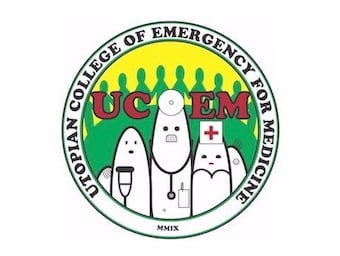
Funtabulously Frivolous Friday Five 158
Funtabulously Frivolous Friday Five 158 - Just when you thought your brain could unwind on a Friday, some medical trivia FFFF.

Funtabulously Frivolous Friday Five 158 - Just when you thought your brain could unwind on a Friday, some medical trivia FFFF.

An insight to Crusaders SuperRugby, pitch side trauma and sports medicine management with Dr Deb Robinson

Almost immediately after finishing ‘Time to publish then filter?’ - a post that highlighted a recent editorial in the BMJ outlining the need for an effective system of post-publication peer revie

I came across this post while getting up to speed with Critical Insight, a UK-based online blog-come-journal club. It had a link to a recent BMJ editorial by David Schriger and Douglas Altman — you may remember David Schriger from…

Clinical neurology a primer is written by leading Australian neurology Associate Professor Peter Gates. This book is the ultimate guide to neurology for people like me – who don’t understand it, but need to know it! Available in kindle edition…

The elephant in the Health living room is the budget. The money is going to the wrong places and into pockets rather than into real improvements in health outcomes. The answer may lie with the science of clinical practice variation and starting a public conversation on the subject.
Stuart Marshall is an anaesthetist with a PhD in Human Factors and is the Clinical Director of Simulation Education at The Alfred (based at the Australian Centre for Health Innovation). In this FOAM video, created for the Critically Ill Airway…

That’s right, SMACC SimWars is turning into a global conflict. Hot on the heels of EMCrit’s Scott Weingart announcing himself to be one of SMACC’s elite SimWars judges (and confessing his delight in the sadistic elements of his co-creation), the…

The newly formed Southern Hemisphere Information Technology '4 brains' group have covertly implemented a series of strategies within Australian hospitals which they are confident will coagulate productivity to a state of suppuration.

An essential co-factor in the synthesis of clotting factors II, VII, IX and X. It is used for the reversal of coumadin-induced coagulopathy.

Sugammadex is used for reversal of the amino steroid neuromuscular blocking drugs rocuronium, vecuronium and pancuronium. It does not work on non-amino steroid neuromuscular blocking drugs (atracurium, cisatracurium and suxamethonium).

Succimer (DMSA) is an orally active metal chelator is used to treat heavy metal poisoning. In adults Succimer is used for symptomatic lead poisoning or in patients who are asymptomatic with levels >60 micrograms/dL (>2.9 micro mol/L). In paediatrics it is used for symptomatic lead poisoning or in patients who are asymptomatic with levels >45 micrograms/dL (>2.17 micro mol/L).